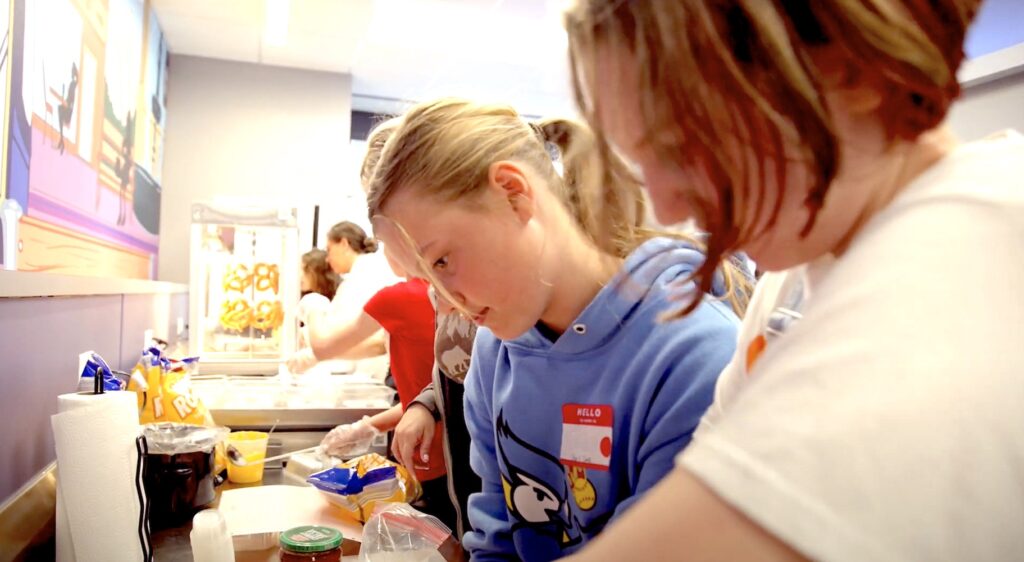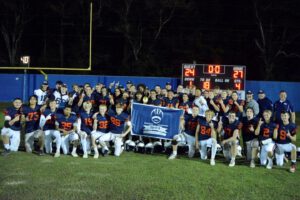Kansas City homeschool students to learn economics through simulated mini-economy field trip
Teaching children complex subjects such as business skills can intimidate homeschool parents, especially if they don’t have any firsthand experience.
Fortunately, group field trips to places…

Teaching children complex subjects such as business skills can intimidate homeschool parents, especially if they don’t have any firsthand experience.
Fortunately, group field trips to places like the School of Economics can help.
“When your kids are struggling, it’s hard to not jump in and want to give them the answers and help them right away,” said Julie Brickey, a homeschool mom in the Kansas City metro area.
“But this is a problem-solving environment, and so you kind of have to sit back and let them struggle a little bit to try to figure it out on their own.”
The homeschool nonprofit Midwest Parent Educators (MPE) has partnered with the School of Economics to offer a field trip just for homeschoolers on March 13.
The program typically requires at least 60 students in grades 3-8 for participation, making it more difficult for homeschoolers unless families can recruit enough participants.
Brickey had attended the event as a special education teacher in a public school.
After leaving the school, she took a new job at the Down Syndrome Guild where she worked with teens for two years. She partnered with Karen Hudson, the program’s director, to develop a modified program for her students with special needs.
A two-day learning opportunity
Brickey took her then 11-year-old son, whom she now homeschools, on the field trip in 2023 and participated as a volunteer. She’s planning to attend again this year with some of her son’s friends to join them.
Before the field trip, participants gather for Preparation Day, which includes dividing students into “producer” and “consumer” groups.
“There’s a front area with the mayor’s office, a bank, and that is where all the money transactions happen,” she said. “Then there’s a kiddo who runs for mayor of the whole thing. They have to give a speech and they get chosen by their peers. It’s really a fun thing.”
What if your child doesn’t want to run for mayor but prefers to work in the background? No problem, Brickey said.
“The kids actually fill out a job application as to what store they want to work at,” she said, adding they need to list both strengths and weaknesses.
“For example, ‘I’m a good listener. I’m outgoing. I like to talk to people. I’m good with building things, but I’m not so good at my cooking skills.’”
Field trip organizers read the applications and decide where to assign children based on their competencies.
“They’re not going to put all the quiet ones in one group because that’s not going to do any good, and they don’t put all the outgoing ones in one group,” Brickey said. “They mix them up well so that they learn from their peers. They have an outgoing person that can help sell things and a quiet person who can do the work in the back.
“It just really helps them learn that if you work together, you need a variety of different people.”
Creating a mini-economy
On the day of the field trip, students discover a freshly made Mini-Town of stations, or shops. Brickey described it as a bunch of tables like lemonade stands, but bigger.
“Each shop has a craft and a food that they make,” she said, noting each has a theme based on different ethnic cuisines such as Mediterranean, American and Asian.
Children must follow the provided recipes to create items such as tacos, BBQ sandwiches, desserts, and more.
“The kids have to put a price on their items,” Brickey said. “They have to decide, ‘How much am I going to sell this for, based on what I think people would pay to buy it?’”
Just like the real economy, these budding entrepreneurs must develop ways to market their product.
“They make posters to advertise it,” Brickey said. “Last year some of the kids were like, ‘Get your hot BBQ sandwiches here,’ and it was like a carnival.”
The program operates on a rotation system, some students acting as consumers while the rest manage their shops.
“The more things that they sell, the more money they make,” Brickey said. “They get a paycheck from the bank. They have to take their paycheck to the bank, cash it in, and they get fake money. Then they can use that money to purchase things from the shops.”
Students must use a portion of their paychecks to cover the not-so-fun costs, such as supply materials and bank loans to start their businesses. They also need to pay their employees.
They can spend whatever is left over as they like, Brickey said.
“They go shop and they get to eat, and that’s what they eat for lunch,” she said. “So they might get a hot dog and nacho chips and some popcorn. It’s not the healthiest food, but it’s fun. And they have a good time doing it.”
Children need to have complete control over their purchases since they will live with the consequences, Brickey said.
“If they choose to buy all craft items and no food, then they’re hungry and they’re starving, and that’s their choice,” she said. “If they choose to buy all food and no crafts, that’s OK too.”
Real-life lessons in a ‘kid-friendly environment’
The program provides multiple opportunities for children to learn from initial mistakes and work together to find solutions.
“They get to re-evaluate their price,” Brickey said. “They think, ‘OK, we charged $3 for BBQ sandwiches and we only sold three of them. So maybe it’s too high-priced.’”
After that re-evaluation, students get additional opportunities to make purchases and sell merchandise.
“They talk about supply and demand and how it’s important that if your demand is high, you raise your price,” she said. “If your demand is low, you lower the price so that you can get rid of all your items and make the most money.”
Along the way, children discover this makeshift economy doesn’t guarantee a successful outcome.
“Some kids make a lot of money. Some even have extra money at the end that they pass out to friends,” Brickey said. “They might say, ‘Here, I’ll lend you a dollar,’ and then some are broke.”
However, even “broke” students can return supplies to the bank under certain conditions, Brickey said.
“It teaches them if you buy something at the grocery store, as long as it’s not opened, you can return it and get your money,” she said. “It’s really a fun way for them to learn about money – how it’s exchanged, how you borrow money, in a very simple, kid-friendly environment.”
The children enjoy the hands-on program that provides an easy way to learn difficult skills, Brickey said.
“My kid’s a very visual learner, and he learns well through doing things like this,” she said. “He asked as soon as we got in the car, ‘Are we going to do that again?’”
Parents pay $20 per student to sign up for the program, and registration is open until Feb. 15.
One benefit for parents and volunteers involves seeing their children develop problem-solving skills on their own, Brickey said.
“A part of me last year just wanted to be like, ‘Just sell the sandwiches for $2,’” she said. “You think that’s right. But you can’t. You have to let them charge $5 and realize it’s way too much. … Volunteers just kind of watch and see what happens and actually see the growth that their kids make from what they have taught them.”



